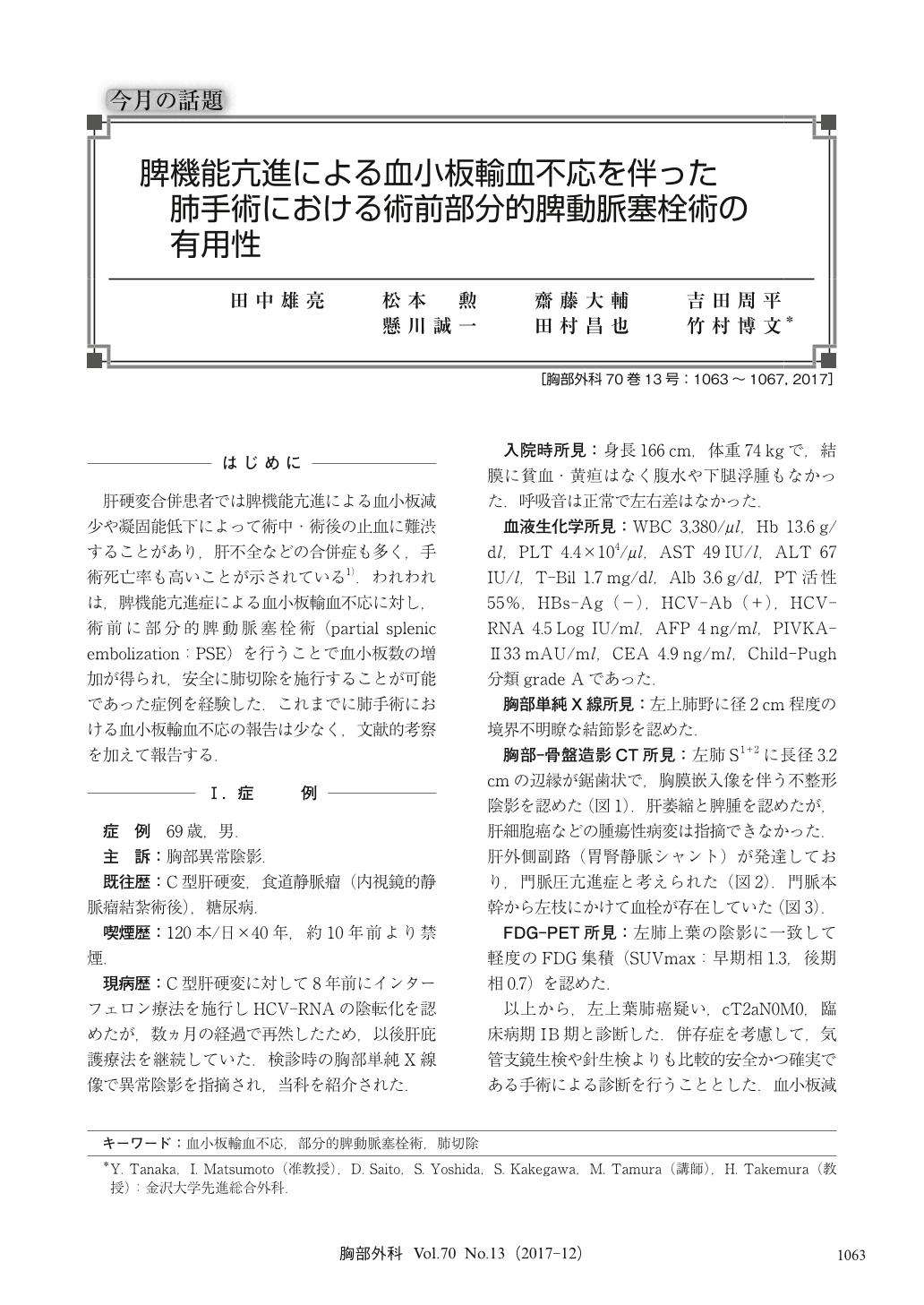Japanese
English
- 有料閲覧
- Abstract 文献概要
- 1ページ目 Look Inside
- 参考文献 Reference
肝硬変合併患者では脾機能亢進による血小板減少や凝固能低下によって術中・術後の止血に難渋することがあり,肝不全などの合併症も多く,手術死亡率も高いことが示されている1).われわれは,脾機能亢進症による血小板輸血不応に対し,術前に部分的脾動脈塞栓術(partial splenic embolization:PSE)を行うことで血小板数の増加が得られ,安全に肺切除を施行することが可能であった症例を経験し
It is often difficult to control perioperative bleeding in patients with liver cirrhosis and concurrent thrombocytopenia and coagulation factor deficiency. Partial splenic embolization (PSE), an auxiliary treatment strategy in management of liver cirrhosis and hepatocellular carcinoma, can not only increase platelets but also improve liver function. With advances in interventional radiology, PSE is a safer and more reliable procedure compared to a splenectomy. We present the case of a 69-year-old man diagnosed with left lung cancer, with thrombocytopenia, and hepatitis C virus-related cirrhosis. Although he was administered prophylactic platelet transfusion prior to operation, he was noted to be refractory to platelet transfusion. PSE was performed to improve his thrombocytopenia, following which we could safely perform left upper lobectomy of the lung and ND2a-1 lymph node dissection without any major bleeding. PSE is useful induction therapy to provide a wider choice of treatment options for patients with thrombocytopenia.

© Nankodo Co., Ltd., 2017


